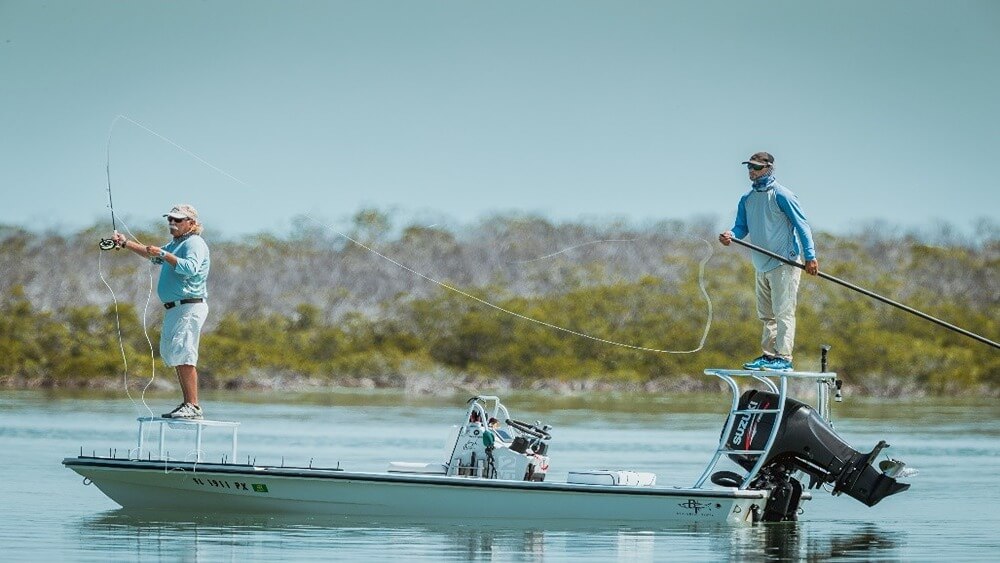Human Use
Conservation Issue
Florida Keys National Marine Sanctuary (FKNMS) is a recreational destination for many people from all over the globe. Information on visitors to the Florida Keys; where they go and the recreational activities they participate in; their knowledge and beliefs toward resources; the carrying capacity of reefs for human use; and the social, economic, and cultural value and impact of reefs are critical information necessary in order to effectively communicate the importance of the habitats and resources and to plan for better management of the sanctuary.

Description
In order to make positive impacts on Florida’s coral reef ecosystems, there must be participation and support from the surrounding community in conserving these resources and better knowledge of the impacts human use has on local environments. Assessing the carrying capacity of coral reef ecosystems for human use, as well as conflicts between recreational activities and the ecosystem or other user groups, can help inform future management and zoning. In order to target educational programs and identify recreational impacts in the sanctuary, the types of recreation people are participating in and their impacts must be studied. The gaps in the data are divided into three categories: public perception and knowledge; tourism and hospitality; and recreational and commercial impacts.
Local attitudes and perceptions of the natural resources in south Florida are assessed as part of NOAA’s Coral Reef Monitoring Program; however, these surveys target those living in South Florida counties on the East Coast, and exclude the countries in the greater Everglades watershed and visitors to the Florida Keys. National data on perceptions of the ocean are collected by many nonprofit organizations and universities to assist regulatory agencies and other organizations in improving communication with various audiences and better targeting values that communities share. This allows us to speak a common language and break down barriers to conversation and discourse.
Data on tourism and hospitality trends in Monroe County allow educators and resource managers to focus their efforts on specific target audiences and target recreational experiences with high participation. Data on this topic will also have implications for local businesses and their management, as well as for tourism and marketing firms in the area.
Identifying and understanding recreational and commercial impacts on FKNMS allows managers to examine specific recreational and commercial opportunities and their impact on sanctuary resources. It also allows for the evaluation of management programs put into place over the years. The Blue Star program was started in response to research conducted on diver behavior in FKNMS. More data and research should be collected to evaluate the effectiveness of this program and its fishing counterpart. Additionally, understanding the recreational and commercial carrying capacity of reefs and how restoration affects these levels will also play a role as Mission: Iconic Reefs continues to progress over the next 20 years.
Data and Analysis Needs
- Public Perception and Knowledge
- Americans’ perceptions of coral reefs, their value, and their current state
- Tourist perceptions regarding natural resources, their value, and their current state in the Florida Keys
- Local and regional perceptions of FKNMS
- User perceptions of the different zones, regulations, management measures, and restoration activities
- Tourism and Hospitality
- Best practices for ecotourism certification programs (with specific interest on those focused on scuba diving/snorkeling and fishing) and what that means for Blue Star Programs in a highly sensitive natural area like FKNMS
- Qualities of excursions and operators that increase the likelihood of booking
- Economic value of restoration tourism experiences in the Florida Keys
- Recreational and Commercial Impacts
- Effectiveness and impact of Blue Star Diving and Blue Star Fishing Guides programs
- Use patterns of commercial operators, including whether the health of the reef plays a role in site selection
- Impacts of commercial tourism and fisheries operators on reefs over time
- Carrying capacity of local coral reef ecosystems
- Effects of the implementation of a mooring ball system on anchoring behaviors in FKNMS
- Spatial patterns of visitor use in FKNMS
- Effectiveness of boater education programs in the Florida Keys
Potential Products
- A framework of values and prior knowledge of Americans regarding coral reefs from which coral reef educators could develop targeted materials
- A document highlighting best practices for ecotourism in the Florida Keys
- Marketing guide for local businesses on reaching clients that value conservation efforts
- Carrying capacity estimations for local coral reefs
- Map of visitor use patterns in FKNMS
For more information about this assessment, contact Lindsey.Crews@noaa.gov.

